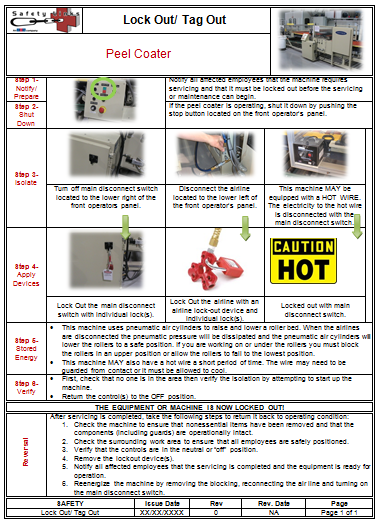
In the meantime, tags come perfectly handy where locks can’t physically lock out energy-isolation devices.Īlong with that, they also provide crucial information like who approved the lockout, why it was approved, and also keep you up to date about the current status and time. It’s used as an energy-isolating device that turns off the energy source of the machine to secure the device in a safe position. Locks are used when the equipment is required to be locked physically. In short, both are hardcore protection against unsafe equipment where the lockout device is the first layer, and the tagout device is the second. Meanwhile, the tagout tells them not to work on the machinery. The lockout device stops employees from working on the equipment. However, do not confuse lockout and tagout as performing a similar function.

This process ensures that the equipment is shut down and inoperable until workers complete the planned action. LOTO procedure also includes placing tags and locks on energy isolation devices (e.g., power switches, control valves) to prevent their unauthorized use during the servicing of a machine. The procedure is executed in several steps in which an authorized employee ensures that equipment is properly shut down and any potentially dangerous stored energy is isolated and released prior to maintenance. Lockout/tagout (LOTO) is a technique used to prevent energy from being released during the servicing of equipment.
#Lock out tag out policy how to
So, what does the lockout/tagout program include and how to start with its implementation? We looked at the official materials from OSHA and CDC to bring a detailed overview to everyone interested in the topic.

Properly implemented lockout/tagout program can prevent many injuries, incidents, and even deaths occurring in workplaces. That means, LOTO standards compliance is often inspected and controlled by OSHA and eventually may result in hefty fines for companies that do not meet the policy.Īnd it’s not a surprise. Lockout/tagout procedure (often labeled as “LOTO procedure” or “lockout/tagout”) is one of the top ten most frequently cited standards by the Occupation Safety and Health Administration (OSHA).


 0 kommentar(er)
0 kommentar(er)
